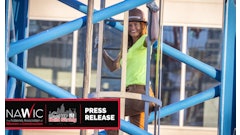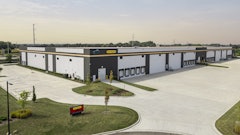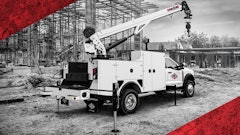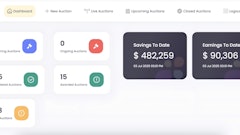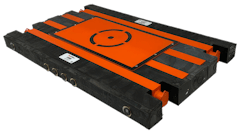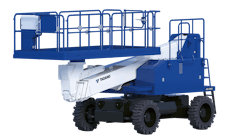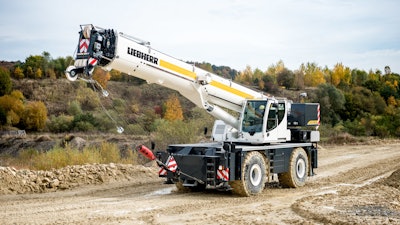
Liebherr has extended its mobile crane product range with a series of rough-terrain cranes in the 100-ton and 110-ton classes. The LRT 1090-2.1 and LRT 1100-2.1 were officially unveiled to the public at the CONEXPO-CON/AGG 2017 show in Las Vegas in March 2017. They were designed from the ground up with strength, safety, comfort and efficiency in mind.
According to Liebherr, the development of the new generation of rough-terrain cranes was guided by extensive market surveys and analyses into the requirements for modern RT cranes, particularly in the North American market. In addition to the capacity of the cranes, safety derived from ease of operation was one of the main focal points for the development of the new crane models.
Liebherr Gives In To Customer Demands to Return to Rough Terrain
[VIDEO] Liebherr Re-enters Rough Terrain Crane Market After 20 years with Two New LRT Models
The new LRT cranes are powered by a Cummins 6.7-liter diesel engine meeting all current emissions regulations. The engine develops 264 bhp and supplies a maximum torque of 730 lbs.-ft. A six-speed Dana powershift transmission and large 29.5 R25 tires guarantee the required off-road capability. Their maximum speed is 15 mph. All-wheel and crab steering ensure easy handling and high maneuverability in constricted conditions.
The 110-ton LRT 1100-2.1 has a 164-ft. five-part telescopic boom with a "Telematik" telescoping system on which the various telescoping sections can be extended independently with a single cylinder and then pinned to the telescopic section above. The telescoping system is simple and user-friendly; lifting capacities over the entire radius range can be achieved with just two telescoping modes (Strong or Long). The crane's 30,800 lbs. (14 tonnes) of counterweights ensure high stability. The lifting capacity of the LRT 1100-2.1 is around 15% higher than that of the 100-ton model, which features 26,500 lbs. of counterweights.
The LRT 1090-2.1 features a 154-ft. telescopic boom. Its telescoping system consists of a two-stage hydraulic cylinder with a rope extension mechanism. Like the larger model, the boom can be extended easily with the Strong or Long telescoping modes. The extension mechanism on both crane models has been designed for high telescoping lifting capacities.
[VIDEO] Demo of the Liebherr LRT 1090-2.1 Rough-terrain Crane Prototype
A second winch and the rooster sheave are included as standard on the basic machine for two-hook operation. As an option, a 34.5 - 62-ft. double-folding jib can be installed on the telescopic boom. It can be attached at an angle of 0°, 20° or 40°.
The cranes measure 12 ft. 8 in. in height and 10 ft. 10 in. wide and are transported on public roads with a low loader. Their curb weight is less than 121,000 lbs. with complete equipment including ballast, or under 88,000 lbs. without ballast and without equipment. The outrigger pads remain inside the width of the vehicle and do not have to be removed for transport.
Designed with Safety in Mind
The crane chassis and turntable on the LRT 1090-2.1 and LRT 1100-2.1 are almost identical. The differences relate to the boom length, telescoping technology, ballast weight and lifting capacity. Both models feature an outrigger monitoring system as standard. The support status, on tires or outriggers, is detected automatically and saved to the crane controller. The attachment of the ballast to the turntable and the installation of the optional double-folding jib, including its angle adjustment, are also recorded and monitored.
The standard VarioBase variable support base allows each individual outrigger beam to be extended to arbitrary lengths. The crane work is controlled by the load moment limiter within the LICCON controller, which calculates the maximum load capacities precisely for the current situation. This prevents accidents by human error during the assembly process and when hoisting loads. VarioBase also provides greater flexibility on site. As a result of the increased lifting capacities when hoisting over the supports, the company says the crane can hoist loads normally reserved for the next higher crane class.
[VIDEO] Liebherr Rough Terrain Cranes Provide a Safe Alternative
Safety is also enhanced by providing greater comfort for the crane operator. For example, the wide crane cabin can be tilted backwards 20° to provide greater comfort when hoisting loads to great heights. Clear, self-explanatory controls make the crane easy to handle, allowing the operator to concentrate on working with the crane and the load. An integrated cooler, integrated air conditioning and USB charging socket are standard features in the cabin.
There are ladders, a large number of handles and an electrically extending platform on the cabin to ensure safe access to the crane. A variety of storage boxes for accessories, rigging equipment and support timber are standard. There is also a storage facility for the crane hook.

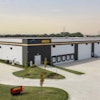

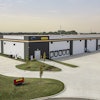
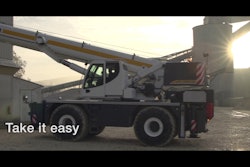
![[VIDEO] Liebherr Re-enters Rough Terrain Crane Market After 20 years with Two New LRT Models](https://img.forconstructionpros.com/files/base/acbm/fcp/image/2017/03/default.58bf2f5ce7fa3.png?auto=format%2Ccompress&fit=crop&h=167&q=70&w=250)
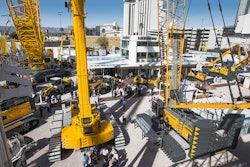
![[Video] Liebherr Shares Insights on Recent Technology Advancements](https://img.forconstructionpros.com/files/base/acbm/fcp/image/2016/11/default.5820c4df4098e.png?auto=format%2Ccompress&fit=crop&h=167&q=70&w=250)



